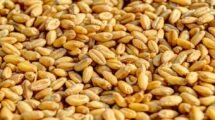Union Finance Minister, Nirmala Sitharaman while addressing budget 2021 on Agri and allied sector proposed a 10% rise in the farm loan disbursement target to ₹ 16.5 lakh crore in the budget 2021 and announced an agri-infra and development cess of up to 100% to build post-harvest infrastructure to boost farmers’ incomes, stating that the government is committed to farmers’ welfare.
The Minister further announced a higher fund allocation for the Development Fund for Rural Infrastructure and the Micro Irrigation Fund, as well as an extension of the Agriculture Infrastructure Fund to APMCs for the Expansion of Infrastructure.
Significant investment was also proposed by the Government for the construction of fisheries harbours, fish landing centres and the promotion of seaweed farming.
Also Read: India’s Agri Credit Target elevated to ₹ 16.5 lakh crore in the budget 2021
Addressing the first digital budget in Parliament, the finance minister said that the agricultural proposal would further reinforce “the Sankalp of the country first, doubling farmers’ income, good infrastructure.” among many others.
“I have increased the agricultural credit target to ₹ 16.5 lakh crores in FY’22. We will work together to ensure increased credit flows to livestock farming, dairy, and fisheries.” However, the farm loan goal set for the next financial year is greater than the ₹ 15 lakh crore set for the current financial year.
Highlighting the need to boost agriculture infrastructure to ensure higher compensation to farmers, Sitharaman suggested an Agriculture Infrastructure and Development Cess (AIDC) for some commodities in the range of 2.5 to 100%.
“There is an urgent need to strengthen agricultural infrastructure such that we produce more agri output, while also preserving and processing agricultural production effectively. This will ensure increased remuneration for the farmers,” she added.
Also Read: Govt to prioritizes 10 crore small and marginal farmers – President
That being said, the government has taken care for not to put an extra burden on consumers on many of these goods while applying this cess, she mentioned. Last year, the government declared the ₹ 1 lakh crore Agriculture Infrastructure Fund to finance post-harvest infrastructure facilities at subsidized rates for projects.
In addition to the new cess, the Minister announced that the Agriculture Infrastructure Fund will be made available to the Agriculture Products Marketing Committees (APMCs) to extend their necessary infrastructure facilities.
The Minister also proposed increasing the allocations to both the Rural Infrastructure Development Fund from ₹ 30,000 cr to ₹ 40,000 cr and doubling the allocation to the Micro Irrigation Fund from the existing ₹ 5,000 crore created by NABARD.
The Finance Minister has said that the scope of ‘Operation Green Scheme,’ which is currently applicable to tomatoes, onions, and potatoes, will be extended to include 22 perishable goods in order to increase value added in agriculture and allied products and their exports.
The FM stated that about 1.68 crore farmers have enrolled on the electronic National Agriculture Market (eNAM) and ₹ 1.14 lakh crore of trade value was carried out through the e-platform.
Also Read: Economic Survey 2021 will be tabled on 29 January, a few days before budget
‘Having considered the transparency and competitiveness that e-NAM has introduced into the agricultural sector, 1,000 more mandis will be connected with e-NAM,’ she noted. The She further proposed major investments in the construction of new fisheries harbours and fish landing centers in order to improve the fishing industry.
As hubs of economic activity, five major fishing harbors, Kochi, Chennai, Visakhapatnam, Paradip, and Petuaghat, will be built to begin with. Inland fishing harbors and fish-landing centres along the banks of rivers and waterways will also be established, she added.
Also Read: 12 lakh tea employees lives to improve with a special package of ₹ 1,000cr
The Minister said that it would generate large-scale jobs and additional revenue, adding that seaweed farming is an emerging sector with the potential to change the lives of coastal communities. ‘ To promote seaweed production, I recommend a Multipurpose Seaweed Park to be created in Tamil Nadu,” she noted.
The Minimum Support Price (MSP) regime has undergone a radical change to ensure a price that would be at least 1.5 times the production cost throughout all commodities. At a steady pace, procurement has also continued to expand. This has contributed to a large rise in payments to farmers, she said.
Since 2013-14, government payments to farmers for the procurement of major cereal crops (wheat and rice), pulses and cotton have increased significantly, Sitharaman stated. The Opposition shouted slogans when the minister stated MSP procurement, saying that the government should revoke the new farm bills against which some farmers have been protesting at the Delhi border since last two months now.
Also Read: 10 lakh tribal families got MSP worth Rs 4,000 crore for the first time
Speaking further on MSP procurement, the Finance Minister said that the government’s payment for wheat procurement rose from ₹ 33,874 crore in 2013-14 to ₹ 62,802 crore in 2019-20 and even better in 2020-21. The MSP payment in 2020-21 gained around 43.36 lakh wheat farmers from 35.57 lakhs in the last year MSP payment in 2020-21.
Likewise, the MSP payment on the procurement of rice increased from ₹ 63,928 crore in 2013-14 to ₹ 1,41,930 crore in 2019-20 and an estimated ₹ 1,72,752 crore in 2020-21. The payment was made to farmers for the acquisition of pulses rose to ₹ 10,530 crore in 2020-21, more than 40 times higher than ₹ 236 crore in 2013-14, while the payment to cotton farmers increased to ₹ 25,974 crore from ₹ 90 crore in 2013-14 until January 27 this year.















Add Comment